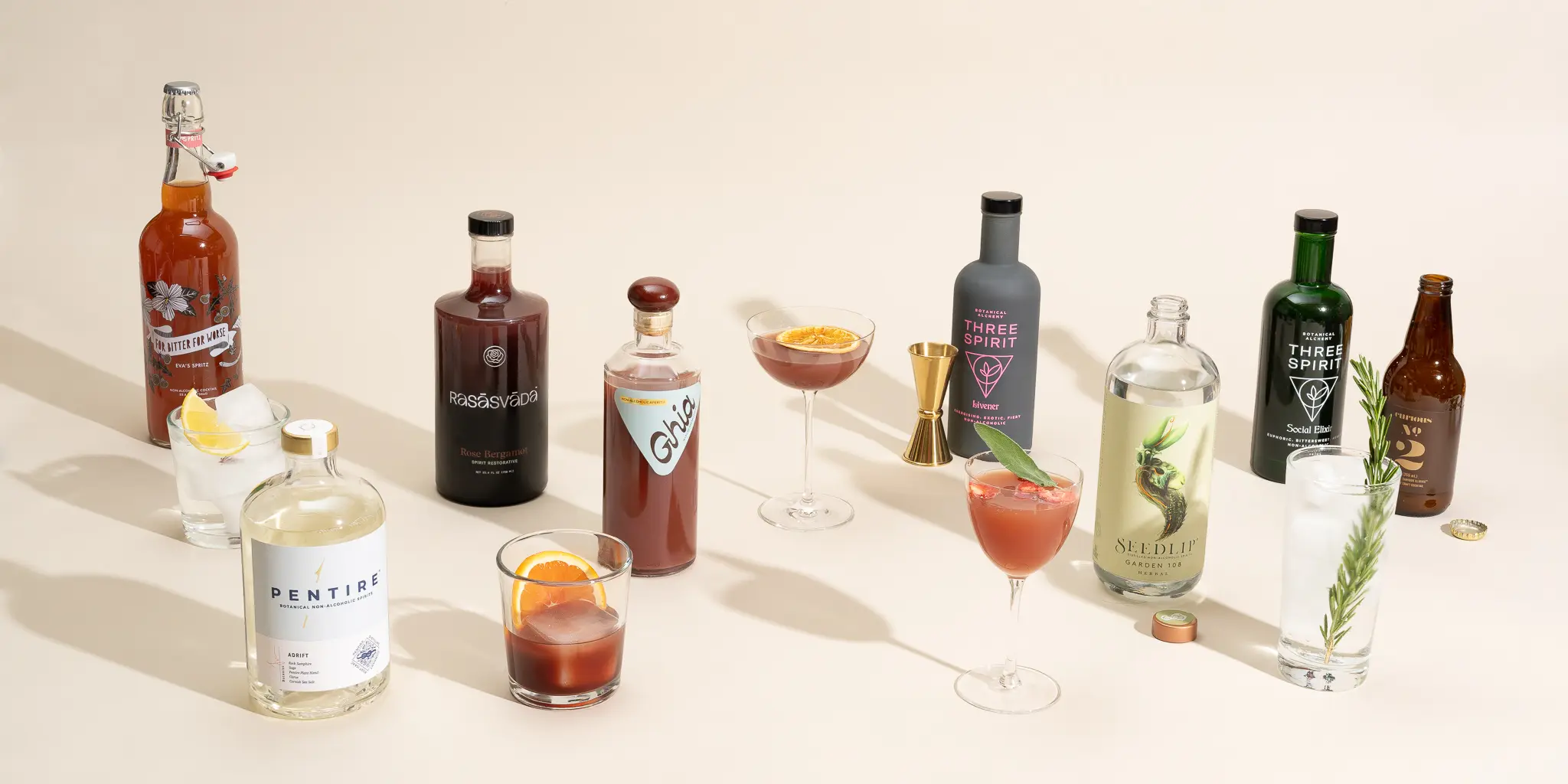AS THE NOISE AROUND ‘DRY JANUARY’ INCREASES, WE’RE WONDERING HOW NO/LOW ALCOHOL ALTERNATIVES JUSTIFY THEIR PREMIUM PRICE POINT
The landscape of the alcohol industry has undergone a transformative shift over the last couple of years, with no/low options skyrocketing. In April 2018, there were only four non-alcoholic spirits brands on the market in the UK; by October of the same year, there were over 40.
But with more brands appearing over the horizon, and established spirits businesses introducing non-alcoholic variants, we’ve often found ourselves asking: should non-alcoholic spirits be as expensive as their alcoholic counterparts?
There are several debates surrounding the cost of no/low spirits and whether their price tags align with consumer expectations. With the cost of living rising and people evaluating their spending more than ever, we consider what makes people opt for more expensive no/low spirit alternatives rather than a pint of Diet Coke when they head out to socialise during Dry January.
Quality Ingredients = Increased Cost
One argument for the comparable pricing of non-alcoholic alternatives centres on the quality and complexity of ingredients and production. Many non-alcoholic brands opt to use premium ingredients which often mirror the choices and flavours made by their alcoholic counterparts.
When quizzed for an article for Stylist magazine, founder of premium non-alcoholic spirits brand Pentire, Alistair Frost, said, “We make our drinks by distilling pure, whole fresh plants, so there’s no dried cloves or spices, no dry botanicals. It’s made with all seasonally sourced, sustainable ingredients.”
In the same article, Clean Co notes that it has to distil 50% more botanicals to get the taste it needs for an exceptional sip. This has an impact on the overall cost of production, thereby increasing the price consumers pay when they pick up a bottle at their local supermarket.
Innovation and Craftsmanship
The art of mixology means that highly skilled bartenders are becoming ever more creative when crafting non-alcoholic cocktails. Many are experimenting with sophisticated flavours and techniques to provide those choosing to stay sober with something equally fresh and exciting as the serves on offer to their friends opting for alcohol.
The knowledge, innovation and artistry required to perfect a non-alcoholic cocktail justifies bars and restaurants charging a higher price than for a straightforward soda over ice.
Changing Consumer Preferences
One noticeable shift is the broadening consumer base. As more people embrace mindful drinking and reduce their alcohol consumption for health-conscious reasons, no/low alcohol beverages are no longer exclusively for teetotallers.
Gen Z consumers make up a large percentage of no/low consumption, with many young adults moderating or eliminating alcohol altogether. In 2021, Gallup Inc revealed that the average Gen Z consumer spends 40% less on alcohol than Millennials. The main behavioural motivations behind reducing their alcohol intake include the importance of public image, productivity and health.
As more people spend higher proportions of their income on health and wellness, there’s more willingness to invest in premium non-alcoholic alternatives. So when a brand can offer consumers increased benefits that align with their healthy lifestyles, it is more likely to encourage purchase.
Perceived Value
Another argument for the higher cost of non-alcoholic spirits revolves around consumer psychology and perceived value. For example, if the price were significantly lower than its alcoholic counterpart, the non-alcoholic option may be perceived as of inferior quality.
Brands that traditionally play in the alcohol space, but that have also launched alcohol-free alternatives, tend to align pricing to help establish more favourable consumer perception. For example, Tanqueray can be found in most UK supermarkets for around £22 for 70cl, while its non-alcoholic variant sits at around £17.
Yes, but…
Having said all that, there are several arguments against maintaining a higher price point for non-alcoholic alternatives.
Some believe that making no/low spirits more widely accessible could broaden the category demographic, allowing certain consumers who might benefit to make healthier life choices and reduce their alcohol consumption.
Many think that if no/low spirits were less expensive, people who want to participate in social events could do so more often with less financial impact. Many people still want to enjoy an exciting venue and feel as sophisticated as their friends drinking the eye-catching cocktail – but let’s be honest, a budget-friendly lime & soda water doesn’t have the same artistic appeal.
So the debate about whether no/low spirits should be priced comparably with alcohol is nuanced, with many factors to take into consideration. As the industry continues to evolve, we believe that striking the balance between pricing and accessibility will be key to ensuring the growth of this sector and appealing to a wide range of consumers.
In an industry that continues to commit to providing high quality, innovative serves for people to enjoy, how to price a drink will continue to involve more than its pure financial cost.




